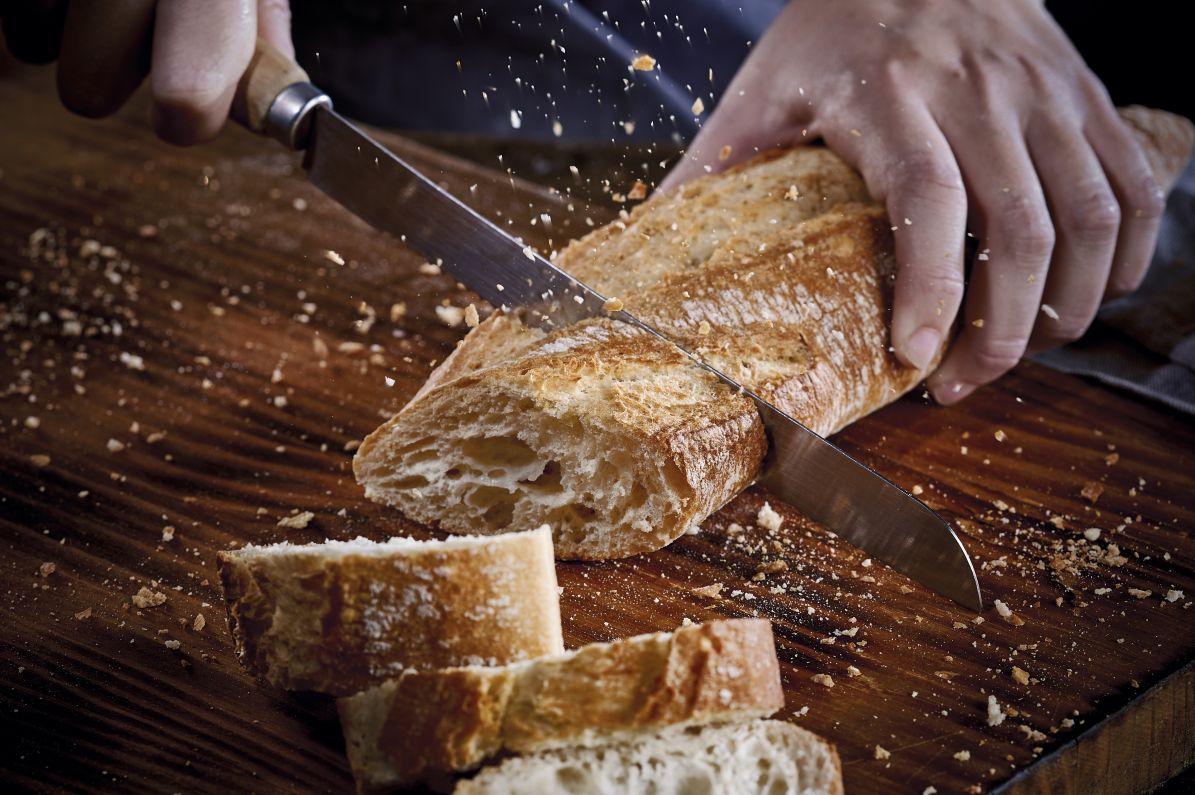The importance of bread in the Mediterranean diet

Less meat and carbohydrates, and more vegetable foods and monounsaturated fats. These are some of the cornerstones of the so-called “Mediterranean diet”, where bread plays a decisive role.
Vegetables, pulses, fruit, fish, white meat, pasta, rice, nuts… and, of course, bread. All these foods are part of the Mediterranean diet, diet that originated mainly in Spain and Italy, and their climate; and whose essential elements include foods such as wheat, olives and vines. The Mediterranean diet is so renowned that UNESCO has declared it Intangible Cultural Heritage of Humanity.
Bread is essential to this diet. The reason why is simply. Bread is a complete, healthy and basic foodstuff, not only on its own, but also as a complement to other foods. Bread, in moderate amounts (as with everything), offers various nutrients, such as complex carbohydrates, fibre (especially if it is wholemeal bread), vegetable proteins and important minerals and vitamins that are essential for the body to work properly. It also contains very little fat and no cholesterol.
The fact is that cereals are basic foods that supply essential nutrients, as Ángeles Carbajal Azcona, a specialist in Nutrition at the Complutense University of Madrid, has pointed out. According to her, cereals “are part of the dietary recommendations in all countries”. In Spain, specifically, food guides state that each day, in one of the three main meals of the day, “you should include 1-2 portions of cereals, preferably wholegrain cereals”, such as pasta, bread, couscous and so on.

Bread and frozen doughs are two closely-related concepts. The growth of the one is essential to the other today. And all the benefits of frozen doughs make them unstoppable. In fact, according to the Spanish Association for the Bakery, Pastry and Confectionary Industry (ASEMAC), the domestic market for frozen doughs has grown exponentially in the last 30 years. In 2019, a figure of 943,000 tonnes was reached. One of the explanations? Easy: the profitability frozen doughs offer compared to other ways of making bread is unbeatable.
The fact is that frozen doughs for bakeries and frozen doughs for the catering industry have increased in recent years for economic reasons; but their success would be so notable if it did not go hand in hand with greater consumer awareness, which increasingly focused on acquiring healthy, diverse and quality products, which is precisely what these products sold by companies distributing frozen bread or selling frozen bread wholesale.
In fact, at the Bread Congress, COPAN21, some figures about consumer behaviour and their greater involvement in the purchase process were presented. For example, it was found that the consumption of wholemeal bread grew by more than 12% in 2020; this also has a lot to do with the fact the public is looking for new varieties, new products and, in short, new breads.
New flavours and a mix of cereals, along with the usual varieties together make for a range in which frozen pre-baked bread is also key to the success of this industry due to its profitability and the quality and variety consumers find in it. For all these reasons, bread is undoubtedly the stand-out product of the moment.

Myths and truths about bread
Frozen pre-baked bread, and in general any type of bread, has suffered from often fraudulent information. Because of this, the consumption of bread has often been frowned upon and myths have been sprung up around it. Myths, not truths.
It is not difficult to dispel them, however, as associations such as PAN CADA DÍA (DAILY BREAD), which help to shed light on these false legends, have shown. For example, bread, contrary to popular belief, does not contribute to becoming overweight or obese.
In fact, a diet rich in bread, especially wholegrain bread, may promote weight loss, a lower waist circumference and a lower body mass index, according to the study ‘Influence of bread consumption on weight status: a systematic review”, by Dr Lluís Serra Majem and Dr Inmaculada Bautista Castaño, of the University of Las Palmas de Gran Canaria.
Benefits of different types of bread
Bread is a nutritious, low-cost, versatile, easy-to-use food that’s always to hand and it comes in various forms from which to choose. What are some of the commonest breads and what benefits do they offer?
You will find this information very useful as a sales tool, given that you’ll be able to be more precise when recommending your establishment’s products:
-Classic bread. This type of bread is a source of nutrition and energy. It is also low in fat, rich in carbohydrates, and it contains calcium and iron. It’s one of the best-known and most widely-consumed breads.
-Wholegrain bread. The main difference between classic bread and wholegrain bread is that the latteruses unrefined wheat flour. Wholegrain bread is more nutritious than classic bread, and rich mainly in fibre, B vitamins and some minerals, such as magnesium. It is also easier to digest.
-Cereal bread. A cereal bread is characterised mainly by the energy it offers thanks to its carbohydrates and fibre (it is also important to prevent constipation problems). On the other hand, it’s very versatile since it can be included in different meals.
- Seed bread. Chia, flax, sesame or pumpkin can crown seed bread, which stands out as a rich source of fibre for the body, since seeds contain vitamins, minerals and omega-3. It also contributes to intestinal health and can prevent chronic diseases due to the natural fats and minerals it provides.

Why proselytise for bread
All the reasons given above are valuable reasons to offer your customers bread. Not only because of its numerous nutritional benefits, but also because of how easy it is to eat as part of a Mediterranean diet along with other healthy products. The virtues of this ancient products are striking and by buying frozen bread the only thing you’re doing is bringing it to consumers as profitably as possible for your and, in doing so, you offer them high-quality and highly varied products. As they say: everyone’s a winner.
Continuing the spread the word of the importance of bread and its benefits for health will be key to increasing its consumption year after year. By proselytising for bread, by becoming a lover of this product and a connoisseur of its characteristics, you’ll contribute to its growth in the industry.


